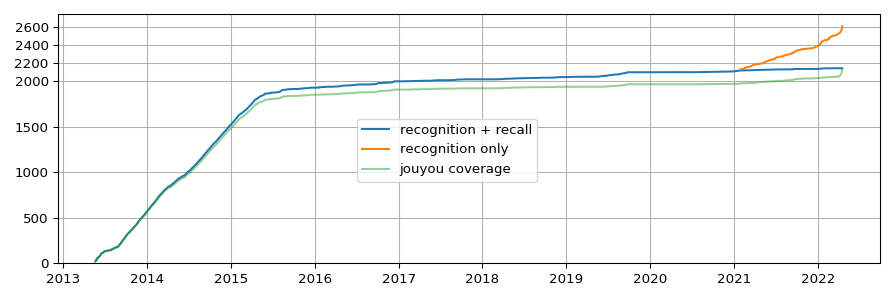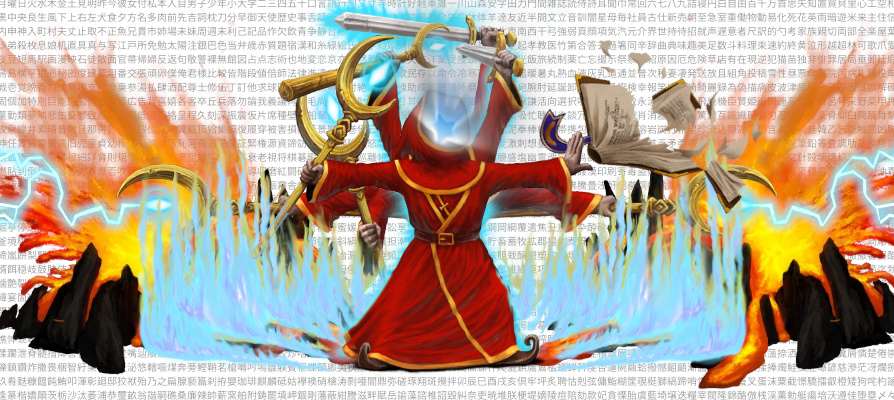Completionism & Chapter Closing
A bit more than a year ago I decided to create a new flashcard deck for recognition only vocab. The deck mostly grew through words I picked up in books, as well as a steady stream of me remembering stuff I could already read (but not write) through natural exposition over the years. The deck grew, containing 100 new kanji, 200, 300, and most recently 400. Imminent checkpoints ahead always sparked quick bursts of actively looking out for words with new kanji to add—a mode of operation that I had pursued until I reached 1,800 recognition+recall kanji.
For the first recognition only 100+ post I came up with the theme of a Magicka mage casting a spell, giving me +100 on my kanji reading stat. As cards and therefore new kanji accumulated quickly, it felt like a fitting theme. At that point I also already created the +200, +300, and +400 images, which were weirdly motivating in and of themselves when a new checkpoint was close. During the quick bursts of actively looking for words with new kanji to add, I ventured into a variety of categories.
- Chinese food: 餃子, 焼売, 小籠包, …
- Animals: 鼠, 狸, 鯉, 鮭, 鷹, 鷲, 麒麟, …
- Place names: 埼玉, 茨城, 栃木, 滋賀, 奈良, 平壌, …
- More food and cooking stuff: 杓子, 炙る, 燗酒, …
- Colors: 橙, 藍, 紺, …
- Chinese zodiacs (干支): 卯, 辰, 巳, 酉, 戌, 亥, …
Around the 400 mark I then noticed another checkpoint in reach. The roughly 2,500 kanji in my cards at that point covered 96% of the 2,136 常用漢字—a list that over time gradually felt less and less relevant after noticing that I’d quite frequently stumble upon words containing kanji new to me from outside of the list, like 爪楊枝, お詫び and 味噌, while words using new kanji from within the list seemed to cover comparatively niche topics, like 畔, 詔, and 陪席. However, with less than 100 kanji to go for a list of 2,136 the completionist in me took over.
Because I knew that for some of the kanji I would only find obscure words when looking for myself, I went through the list with a few natives, asking for the first word that came to their mind when seeing each character. With all the new flashcards added I’m now at 6,824 recognition + recall cards (covering 2,146 kanji) and 524 recognition only cards (covering 462 kanji), adding up to a total of 2,608 kanji. Their accumulation over time looks as follows.

With this short renaissance of actively looking for words with new kanji having reached somewhat of a conclusive checkpoint, I think it is now once more time to Purge An Old Meme put the practice to rest, close this chapter and go back to a natural influx of new stuff through exposition in daily life.
2022-04-17
